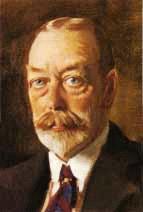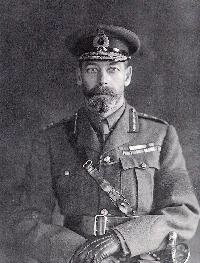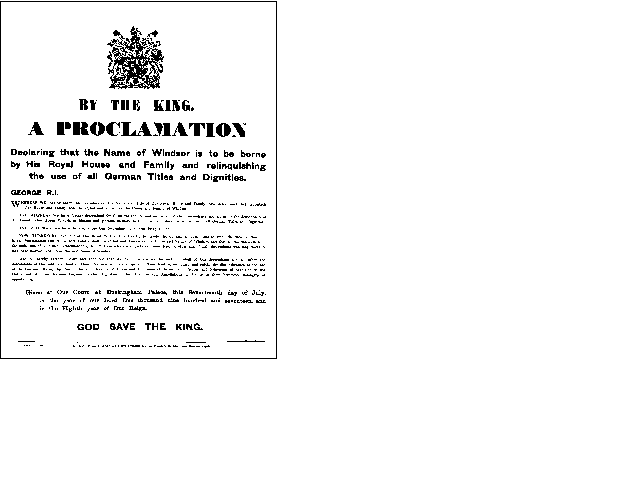The Admiral Stamps of Canada
The Sailor King

|
George was born 3 June 1865. He married Princess Mary (or May) of Teck, who had been hand picked by Queen Victoria to marry George's elder brother, the somewhat inept "Prince Eddy," the Duke of Clarence. When Prince Eddy died suddenly of pneumonia in 1892, Queen Victoria continued to play matchmaker and promoted Mary's marriage to George, and they were married a year and half later. They had six children: Edward, who was later to abdicate the throne, Albert, who became King George VI, Mary, Henry, George (the Duke of Kent), and John, who died at an early age. |
Not expecting to become king, George hadn't prepared for the role. As evidenced by his many tattoos, he had a naval career, which for him spanned an enjoyable 15 years including a tour of duty on HMS Canada. Besides the Navy, his main interests included stamp collecting, polo and billiards. The death of his brother changed everything, however, and he had to leave the Navy to train for the monarchy. He became king on 6 May 1910 at the age of 44 following the death of his father, Edward VII.
| He was thrown into the upheaval of the First World War fours years after his accession to the throne. It was during this time that he started the tradition of Christmas addresses to the nation by radio, thereby bringing the monarchy closer to the people. He became actively involved with the war effort, frequently visiting and inspecting the troops in England and France. Even after suffering a broken pelvis after falling from his horse, he continued to pin medals on soldiers from his hospital bed. Prince Edward served with the Grenadier Guards, and Prince Albert, serving with the Navy, was on the Collingwood during the Battle of Jutland. Queen Mary and Princess Mary visited the wounded and made surgical dressings. |

In Army Uniform |
The War placed the British royal family in an awkward position because the Emperor of Germany, Kaiser Wilhelm II, was the King of England's first cousin, Queen Victoria having been their common grandmother. Although he could not deny the family heritage, George, descendant of the House of Coburg, made an historic proclamation on 17 July 1917 ...
 |
Declaring that the Name of Windsor is to be borne by His Royal House and Family and relinquishing the use of all German Titles and Dignities
This declaration applied not only to himself and to his immediate family, but to all other descendants of Queen Victoria, and all British royalty with house names such as Saxony, Saxe-Coburg and Gotha, Hesse, etc, were changed or translated into English (Battenberg becoming Mountbatten, for example). |
The years following the War saw further violence, with Eire achieving independence in 1921. This period was also marked by protests associated with the Women's Suffrage movement, the National Strike of 1926, and the Great Depression, which began in 1929. These circumstances created deep economic and social divisions among the people, and George found himself playing the role as common spokesperson for everyone through his radio broadcast messages and the like.
King George V died of pneumonia, 20 January 1936, at Sandringham, Norfolk, England, at the age of 71, and was buried at St George's Chapel, Windsor, Berkshire.
Updated: 17 Jul 98


